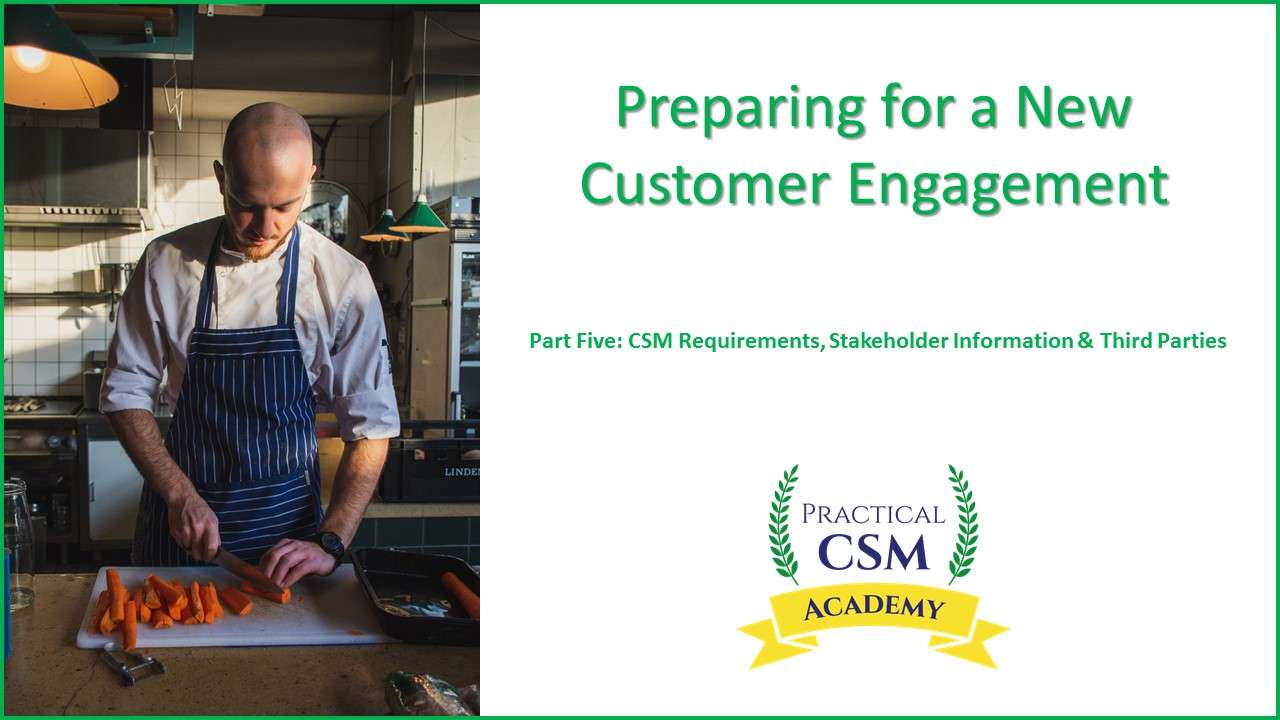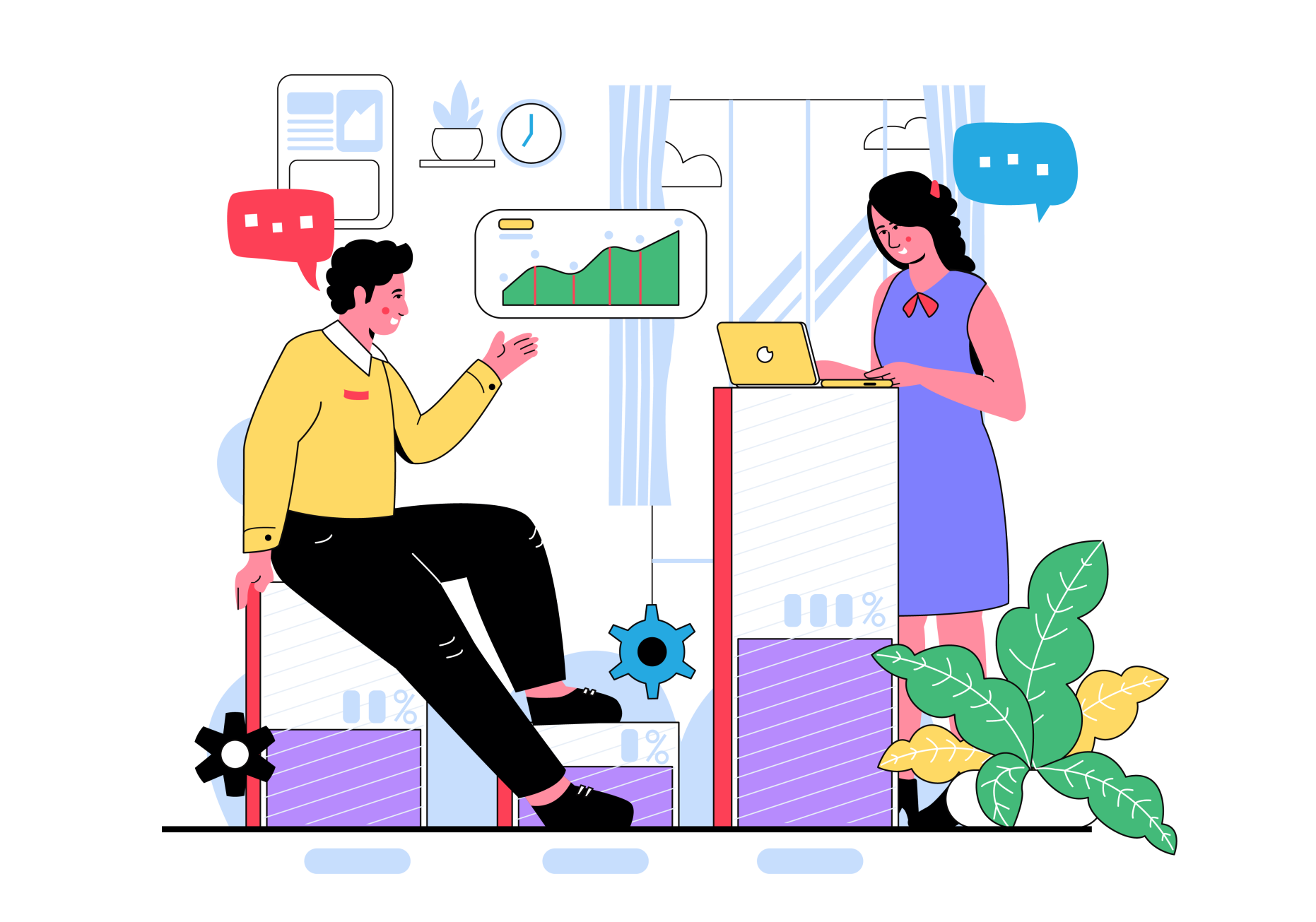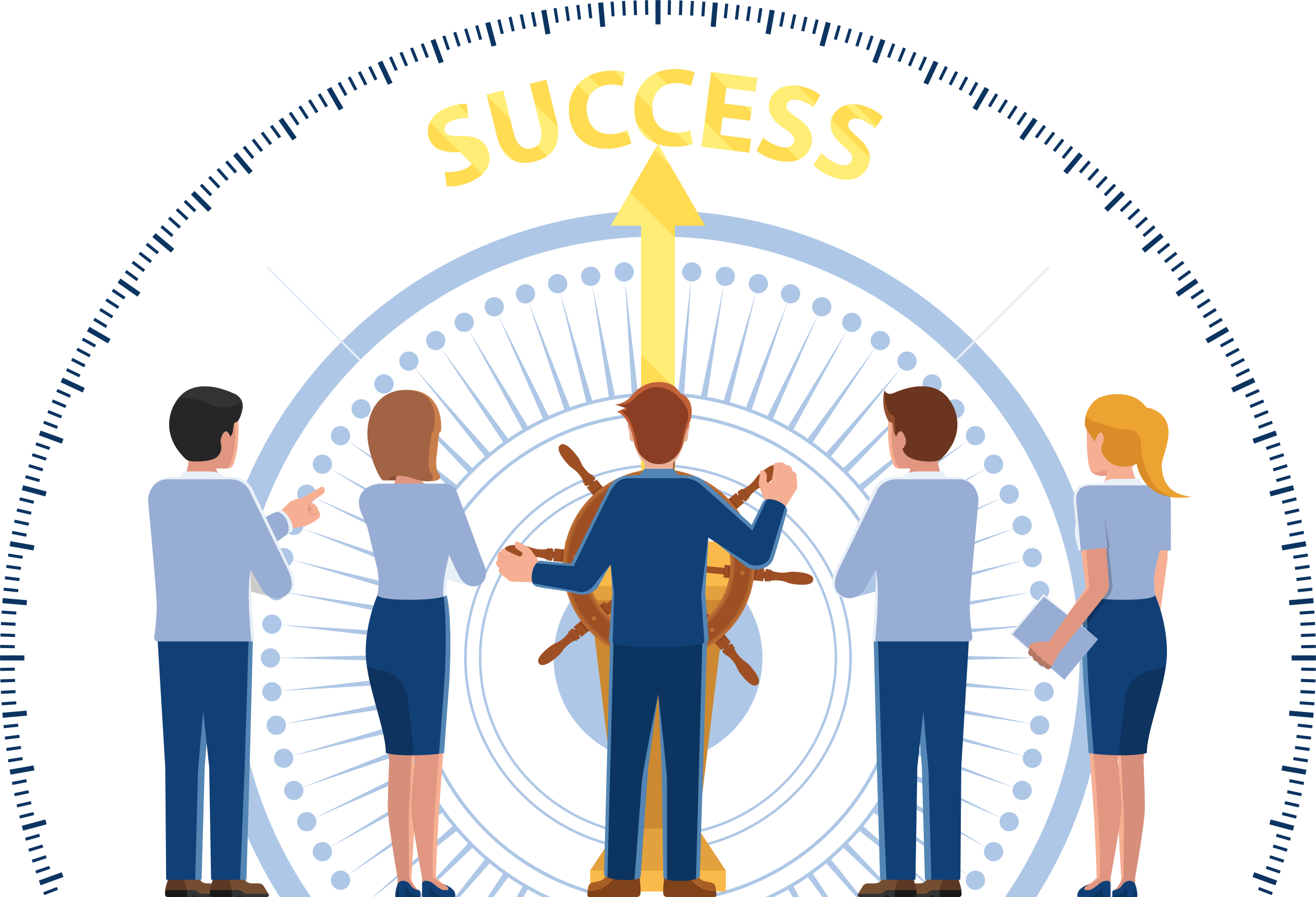Preparing for a New Customer Engagement
Part Five: CSM Requirements, Stakeholder Information & Third Parties
CSM Requirements
Internal Outcomes
As well as the customer’s outcome requirements your own company will (or should) have its own agenda for this engagement, and these could be defined as the “internal outcomes”. This might be as simple as “make sure as best you can that they renew their contract each year” but it might sometimes be more complicated than that. For example this might be the first time that your company has sold this particular solution type to a customer in their industry. If this is the case then assuming it all goes well, your colleagues in Marketing might be particularly keen to utilize the engagement as a case study and get a testimonial from a senior executive that they can use as marketing collateral. Maybe this is the first time that this particular customer has bought anything from your company, and perhaps Sales has been working on winning this customer’s business for a very long time. Perhaps if this goes well, the customer has promised to consider making further high value purchases in the near to mid-term and so there is a lot more revenue riding on the success of this engagement than just the value of this one purchase. Alternatively, maybe a product within your solution is brand new and your R&D team are very keen to gain real world feedback from users as to the product’s usability, quality or functionality. Conversely, maybe this is not a very important engagement for your company compared to what else is going on and your team manager has requested that you do not spend too much of your previous time on it but instead focus your energies on some of the other, more important customer engagements that you are also looking after.
These are some examples, but whatever the situation it is valuable knowledge for the CSM to be aware of, since it might well impact your decision making in terms of prioritizing your time and other resources with this customer over other customer engagements and perhaps even in some of the details of what you do within the customer engagement and how you go about doing it. Some of this information (for example whether or not this is an important new customer making their first purchase from your company) may be known by the account manager or other colleagues who have already been involved in the engagement. However other aspects (such as whether this engagement is perceived as more or less important than other engagements by your manager) will not be known to them and may therefore require further follow up and discussions with other from within your own department or from other parts of your organization as necessary.
Stakeholder Information
The Importance of Understanding Stakeholders
Stakeholder management is a very important aspect of customer success management, and so it is very important for the CSM to receive a thorough briefing on the people who are involved in any customer engagement.
Key Stakeholders
From the perspective of the CSM a key stakeholder is someone with an important role to play in funding, planning and/or implementing the necessary change management activities that will enable adoption of the new solution to occur. This should include (but not necessarily be limited to) those people who are involved in all decision making related to the customer’s initiative, especially the budget holder or holders themselves and may also include those people who advise and influence these decision makers. The people who will play a role in managing or overseeing the adoption and utilization of the solution should be considered as key stakeholders, and particularly the senior project lead (SPL) who will be your primary liaison within the customer organization and whom it will therefore be very important to form a good working relationship with. Another group who might be considered to be key stakeholder are managers of teams or departments whose staff will be significantly impacted by the initiative, since these people may be need to give their consent to make their staff available for training and other activities, and may also be partially responsible for managing processes. The final group to think about as key stakeholders are those people who may be involved in the change management process. This may include people from HR with regard to determining job roles changes and communicating change to employees, from Operations regarding determining process changes, from the Training department regarding any training activities and finally any Adoption/Change Management specialists if any will be involved.
| Key Stakeholder | Description |
| Senior Decision Makers | Budget holders and other senior level authorities who are involved in overall strategic decision making for this initiative |
| Managers and Overseers | The senior project lead (SPL) and anyone else who will play a role in managing or overseeing the adoption process |
| Department / Team Managers | Managers of staff whose job roles will be impacted by the initiative |
| Change Managers | Operations, HR, Training and Adoption/Change Management specialists who are involved in the initiative |
Other Stakeholders
Aside from key stakeholders, other stakeholders would include anyone who is not a key stakeholder but who nevertheless will be impacted by any change which occurs because of the initiative. This would definitely include staff whose job roles are directly impacted by the change, since they will at a minimum need to be communicated to so they are aware of the change and may also need additional activity such as training or even professionally qualifying to operate new equipment. The directly impacted stakeholders’ activities and outputs may also need to be measured in order to help ascertain progress towards the customer’s desired outcomes.
Directly and Indirectly Impacted Stakeholders
In more complex situations the CSM may also need to consider those who are indirectly impacted. These might include members of the workforce who will not use the new solution themselves but who work alongside and collaborate in some way with those who will be using the new solution. Perhaps for example they will receive different outputs from those directly impacted workers which in turn becomes their own inputs for the work they are involved with. You could also argue that people from outside of the customer organization such as customers/clients or suppliers might be indirectly impacted since they may for example receive a changed level or quality of service, a different product, or a new type of request for materials or other supplies. It may be important to know about indirectly impacted stakeholders because these people may also need to be communicated to in some way to make them aware of the changes ahead of time, and also because they also may need to be measured to help build up a complete picture of progress towards outcomes. For example if our customer wants an outcome of increased customer satisfaction levels, our customers’ customers might need to be surveyed both before and after the change has occurred in order to measure the impact of the change on these satisfaction levels.
| Key Stakeholder | Description |
| Directly impacted stakeholders | Anyone whose role will change due to the initiative, perhaps through changes to tools and/or processes that they are involved in following and/or using in their job role |
| Indirectly impacted stakeholders | Anyone whose role does not change but who may still have some level of impact such as receiving different outputs or experiencing different service levels |
Researching Stakeholder Information
The types of information that CSMs ideally need to know about each stakeholder includes name, job role, department, who they report to, who and what they manage, their role in the initiative, their specific needs or requirements from the initiative, any concerns they have expressed about it, and their overall level of positive or negative support for it. It is also a good idea to try to understand where there is consensus between the stakeholders that comprise a management or decision making team and where there could be disagreements that may need to be resolved, and what level of support towards the CSM’s own company each stakeholder has expressed. As well as the “hard facts” it would be good to get an understanding of their personality as well, and to be made aware of any particular problems or challenges around relationship management with them that may be useful for the CSM to be made aware of. If they are a key decision maker then the account manager may also be able to brief you on their decision making style and on who influences their thought processes and decisions.
Managing Your Time
Just as with the customer’s company as an overall entity, there is no limit to the amount of information that CSMs could spend their time learning about stakeholders. It is important to get enough information to be able to start interacting with the customer effectively, but it may well be the case that the CSM can kick off their activities with only partial stakeholder information – though obviously they need to know who the SPL is so they can reach out to that person. Again, the CSM needs to be realistic with their time and bear in mind the RAPAE model when conducting research, analysis and planning activities.
Third Parties and Project Status
Who Else is Involved?
As well as the customer itself both as an organization and in consideration of its workforce as stakeholders, the CSM also needs to be made aware of any other organizations who are involved in the initiative in any way. This might for example include other vendors or resellers/systems integrators who are supplying other products and services that also support the customer initiative alongside the CSM’s won products and services. It might also include any third parties who are involved in the change management process such as third party training companies and change management specialists. It may also include any third parties that are working with the senior decision makers such as management consultants. In each case the CSM needs to make sure they are aware of the role of the third party and what level of influence that third party has over any aspects of decision making. It is also a good idea to understand if there is any competitiveness between the CSM’s own company and each third party, as this may impact strategy around communicating with them.
What Progress Has Already Been Made?
One additional and very important piece of information for the CSM to gather at this early, preparation stage is information on current status. It’s important for the customer to know how far through the overall initiative the customer is. This may include several different aspects, for example the CSM might need to know that the customization work is now completed, the installation and configuration is completed, but there was an issue with integration of the new service with one particular existing IT system which is holding everything up is expected to be resolved by Date X. Or maybe everything is good to go, but the customer’s Legal department have decided they are not happy with a particular clause within the contract, so everything is held up whilst the two legal teams negotiate the clause so that the contract can be signed. The CSM needs to be aware of the impact of the current status on their own work. In the first example it may well be perfectly fine for the CSM to get going on the initiative. In the second example maybe they need to hold fire until the issue is ironed out and the contract has been signed. The current status information that the CSM collects should include the facts as described above but should also include stakeholder emotions. For example are the stakeholders frustrated and angry about what they perceive to be an unnecessary hold up caused by the CSM’s company’s incompetence? Or are they keen eager and excited to get going and feeling positive about the customer experience they have encountered so far? This stuff is always good to know as again it may influence when and how the CSM communicates with these stakeholders.







